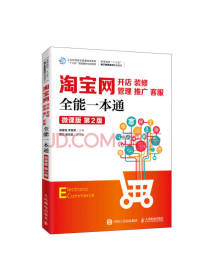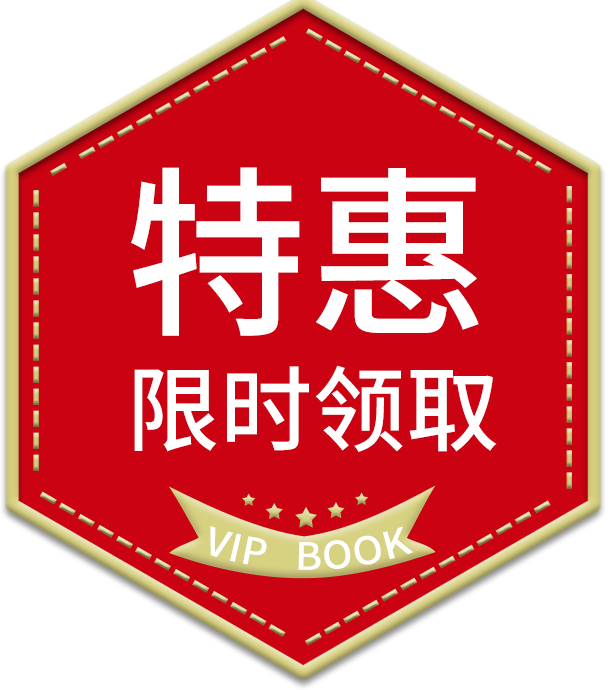内容简介
该书具有很完整的材料与工程体系,无论作为材料专业的教材,还是科技书,都具有很强的实用价值。
章节目录
1. Introduction
1.1 Historical Perspective
1.2 Materials Science and Engineering
1.3 Why Study Materials Science and Engineering?
1.4 Classification of Materials
1.5 Advanced Materials
1.6 Modern Materials’Needs
2.Atomic Structure and Interatomic Bonding
2.1 Introduction
2.2 Fundamental Concepts
2.3 Electrons in Atoms
2.4 The Periodic Table
2.5 Bonding Forces and Energies
2.6 Primary Interatomic Bonds
2.7 Secondary Bonding or Van der Waals Bonding
2.8 Molecules
3. Structures of Metals and Ceramics
3.1 Introduction
3.2 Fundamental
3.3 Unit Cells
3.4 Metallic Crystal Structures
3.5 Density Computations-Metals
3.6 Ceramic Crystal Structures
3.7 Density Computations-Ceramics
3.8 Silicate Ceramics
3.9 Carbon
3.10 Polymorphism and Allotropy
3.11 Crystal Systems
3.12 Crystallographic Directions
3.13 Crystallographic Planes
3.14 Linear and Planar Atomic Densities
3.15 Close-Packed Crystal Structures
3.16 Single Crystals
3.17 Polycrystalline Materials
3.18 Anisotropy
3.19 X-Ray Diffraction:Determination of Crystal Structures(CD-ROM)S-6
3.20 Noncrystalline solids
4. Polymer Strutures
4.1 Introduction
4.2 Hydrocarbon Molecules
4.3 Polymer Molecules
4.4 The Chemistry of Polymer Molecules
4.5 Molecular Weight
4.6 Molecular Shape
4.7 Molecular Structure
4.8 Molecular Configurations(CD-ROM)S-11
4.9 Thermoplastic and Thermosetting Polymers
4.10 Copolymers
4.11 Polymer Crystals
4.12 Polymer Crystals
5.Imperfections in Solids
5.1 Introduction
5.2 Point Defects in Metals
5.3 Point Defects in Ceramics
5.4 Impurities in Solids
5.5 Point Defects in Polymers
5.6 Specification of Composition
5.7 Dislocations-Linear Defects
5.8 Interfacial Defects
5.9 Bulk or Volume Defects
5.10 Atomic Vibrations
5.11 General
5.12 Microscopic Techniques
5.13 Grain Size Determination
6.Diffusion
6.1 Introduction
6.2 Diffusion Mechanisms
6.3 Steady-State Diffusion
6.4 Nonsteady-State Diffusion
6.5 Factors That Influence Diffusion
6.6 Other Diffusion Paths
6.7 Diffusion in Ionic and Polymeric Materials
7.Mechanical Properties
7.1 Introduction
7.2 Concepts of Stress and Strain
7.3 Stress-Strain Behavior
7.4 Anelasticity
7.5 Elastic Properties of Materials
7.6 Tensile Properties
7.7 True Stress and Strain
7.8 Elastic Recovery During Plastic Deformation
7.9 Compressive,Shear,and Torsional Deformation
7.10 Flexural Strength
7.11 Elastic Behavior
7.12 Influence of Porosity on the Mechanical Propertise of Ceramics(CD-ROM)S-22
7.13 Stress-Strain Behavior
7.14 Macroscopic Deformation
7.15 Viscoelasticity(CD-ROM)S-22
7.16 Hardness
7.17 Hardness of Ceramic Materials
7.18 Tear Strength and Hardness of Polymers
7.19 Variability of Material Properties
7.20 Design/Safety Factors
8.Deformation and Strengthening Mechanisms
8.1 Introduction
8.2 Historical
8.3 Basic Concepts of Dislocations
8.4 Characteristics of Dislocations
8.5 Slip Systems
8.6 Slip in Single Crystals(CD-ROM)S-31
8.7 Plastic Deformation of Polycrystalline Metals
8.8 Deformation by Twinning(CD-ROM)S-34
8.9 Strengthening by Grain Size Reduction
8.10 Solid-Solution Strengthening
8.12 Recovery
8.13 Recrystallization
8.14 Grain Growth
8.15 Crystalline Ceramics
8.16 Noncrystalline Ceramics
8.17 Deformation of Semicrystalline Polymers
8.18 Factors That Influence the Mechanical Properties of Semicrystalline Polymers[Detailed Version (CD-ROM)]S-35
8.19 Deformation of Elastomers
9.Failure
9.1 Introduction
9.2 Fundamentals of Fracture
9.3 Ductile Fracture
9.4 Brittle Fracture
9.5a Principles of Fracture Mechanics[Detailed Version (CD-ROM)S-38
9.6 Brittle Fracture of Ceramics
9.7 Fracture of Polymers
9.8 Impact Fracture Testing
9.9 Cyclic Stresses
9.10 The S-N Curve
9.11 Fatigue in Polymeric Materials
9.12a Crack Initiation and Propagation[Detailed Version (CD-ROM)]S-54
9.13 Crack Propagation Rate
9.14 Factors That Affect Fatigue Life
9.15 Environmental Effects(CD-ROM)S-62
9.16 Generalized Creep Behavior
9.17b Stress and Temperature Effects (Concise Version)S-65
9.18 Data Extrapolation Methods
9.19 Alloys for High-Temperature Use
9.20 Creep in Ceramic and Polymeric Materials
10 Phase Diagrams
10.1 Introduction
10.2 Solubility
10.3 Phases
10.4 Microstructure
10.5 Phase Equilibria
10.6 Binary Isomorphous Systems
10.7 Interpretation of Phase Diagrams
10.8 Development of Microstructure in Isomorphous Alloys (CD-ROM)S-67
10.9 Mechanical Properties of Isomorphous Alloys
10.10 Binary Eutectic Systems
10.11 Development of Microstructure in Eutectic Alloys(CD-ROM)S-70
10.12 Equilibrium Diagrams Having Intermediate Phases or Compounds
10.13 Eutectoid and Peritectic Reactions
10.14 Congruent Phase Transformations
10.15 Ceramic Phase Diagrams(CD-ROM)S-77
10.16 Ternary Phase Diagrams
10.17 The Gibbs Phase Rule (CD-ROM)S-81
10.18 The Iron-Iron Carbide (Fe-fe3C)Phase Diagram
10.19 Development of Microstructures in Iron-Carbon Alloys
10.20 The Influence of Other Alloying Elements(CD-ROM)S-83
11 Phase Transformations
11.1 Introduction
11.2 Basic Concepts
11.3 The Kinetics of Solid-State
11.4 Multiphase Transformations
11.5 Isothermal Transformation
11.6 Continuous Cooling Transformation Diagrams(CD-ROM)S-85
11.7 Mechanical Behavior of Iron-Carbon Alloys
11.8 Tempered Martensite
11.9 Review of Phase Transformations for Iron-Carbon Alloys
11.10 Heat Treatments
11.11 Mechanism of Hardening
11.12 Miscellaneous Consideratins
11.13 Crystallization
11.14 Meiting
11.15 The Glass Transition
11.16 Melting and Glass Transition Temperatures
11.17 Factors That Influence Meltiong and Glass Transition Temperatures (CD-ROM)S-87
12.Electrical Properties
12.1 Introduction
12.2 Ohm’s Law
12.3 Electrical Conductivity
12.4 Electronic and Ionic Conduction
12.5 Energy Band Structures in Solids
12.6 Conduction in Terms of Band and Atomic Bonding Models
12.7 Electron Mobility
12.8 Electrical Resistivity of Metals
12.9 Electrical Characteristics of Commercial Alloys
12.10 Intrinsic Semiconduction
12.11 Extrinsic Semiconduction
12.15 Conduction in Ionic Materials
12.16 Electrical Properties of Polymers
14.Synthesis,Fabrication,and Processing of Materials (CD-ROM)S-118
14.1 Introduction S-119
14.2 Forming Operations S-119
14.3 Casting
14.4 Miscellaneous Techniques
14.5 Annealing Processes
14.6 Heat Treatment of Steels
14.7 Fabrication and Processing of Glasses
14.8 Fabrication of Clay Products
14.9 Powedr Pressing
14.10 Tape Casting
14.11 Polymerizatin
14.12 Polymer Additives
14.13 Forming Techniques for Plastics
14.14 Fabrication of Elastomers
14.15 Fabricatin of Fibers and Films
15.Composites(CD-ROM)S-162
15.1 Introduction
15.2 Large-Particle Composites
15.3 Dispersion-Strengthened Composites
15.4 Influence of Fiber Length
15.5 Influence of Fiber Orientation and Concentration
15.6 The Matrix Phase
15.7 The Matrix Phase
15.8 Polymer-Matrix Composites
15.9 Metal-Matrix Composites
15.10 Ceramic-Matrix Composites
15.11 Carbon-Carbon Composites
15.12 Hybrid Composites
15.13 Processing of Fiber-Reinforced Composites
15.14 Laminar Composites
15.15 Sandwich Panels
16.Corrosion and Degradation of Materials (CD-ROM)
16.1 Introduction
16.2 Electrochemical Considerations
16.3 Corrosion Rates
16.4 Prediction of Corrosion Rates
16.5 Passivity
16.6 Environmental Effects
16.7 Forms of Corrosion
16.8 Corrosion Environments
16.9 Corrosion Prevention
16.10 Oxidaton
16.11 Swelling and Dissolution
16.12 Bond Rupture
16.13 Weathering
17.Thermal Properties(CD-ROM)
17.1 Introduction
17.2 Heat Capacity
17.3 Thermal Expansion
17.4 Thermal Conductivity
17.5 Thermal Stresses
18.Magnetic Properties
18.1 Introduction
18.2 Basic Concepts
18.3 Diamagnetism and Paramagnetism
18.4 Ferromagnetism
18.5 Antiferromagnetism and Ferrimagnetism
18.6 The Influence of Temperature on Magnetic Behavior
18.7 Domains and Hysteresis
18.8 Soft Magnetic Materials
18.9 Hard Magnetic Materials
18.10 Magnetic Storage
18.11 Superconductivity
19.Optical Properties(CD-ROM)
19.1 Introduction
19.2 Electromagnetic Radiation
19.3 Light Interactions with Solids
19.4 Atomic and Electronic Interactions
19.5 Refraction
19.6 Reflection
19.7 Absorption
19.8 Transmission
19.9 Color
19.10 Opacity and Translucency in Insulators
19.11 Luminescence
19.12 Photoconductivity
19.13 Lasers
19.14 Optical Fibers in Communications
20.Materials Selection and Design Considerations(CD-ROM)
20.1 Introduction
20.2 Strength
20.3 Other Property Considerations and the Final Decision
20.4 Introduction
20.5 Automobile Valve Spring
20.6 Anatomy of the Hip Joint
20.7 Material Requirements
20.8 Materials Employed
20.9 Introduction
20.10 Thermal Protection System-Design Requirements
20.11 Thermal Protection System-Components
20.12 Introduction
20.13 Leadframe Design and Materials
20.14 Dis Bonding
20.15 Wire Bonding
20.16 Package Encapsulation
20.17 Tape Automated Bonding
21.Economic,Enironmental,and Societal Issues in Materials Science and Engineering
21.1 Introduction
21.2 Component Design
21.3 Materials
21.4 Manufacturing Techniques
21.5 Recycling Issues in Materials Science and Engineering
材料科学与工程基础是2004年由化学工业出版社出版,作者[美]凯里斯特。
得书感谢您对《材料科学与工程基础》关注和支持,如本书内容有不良信息或侵权等情形的,请联系本网站。

















